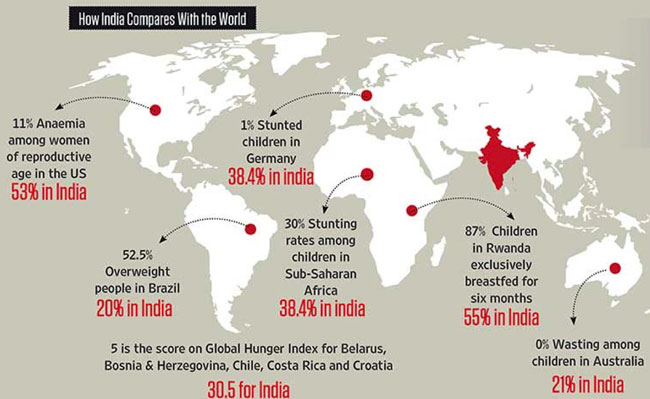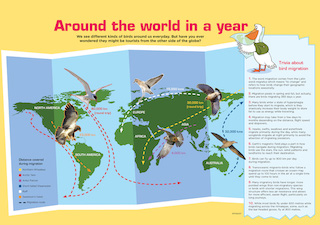An Interview with Dr Vandana Shiva, one of the world’s foremost environmentalist, anti-GM activist and an advocate of ecological farming and sustainable agriculture as a solution to climate change, food security, hunger and peace. The interview was taken on 16th March 2011, during “Grandmonther’s University” a three day course at Navdanya Biodiversity Farm at Dehradun, Uttarakhand, India which Dr. Vandana Shiva founded in 1987 to help save traditional seeds. The farm also undertakes research and training, along with the important role of distributing native seeds to farmers in the region.
Source: Vandana Shiva: Traditional Knowledge, Biodiversity and Sustainable Living
URL: https://youtu.be/d9K0cZGQgHA
Date visited: 9 December 2020
Saving the forests of Garhwal by sticking to trees. Fighting a big dam by living in submerged waters. These movements redefined the greening of India.
4. REAPING A CHANGE
Navdanya Movement, 1982Whether it’s about empowering women or anti-globalisation campaigns,environmental activist Vandana Shiva has always had an upper hand in her fights against the authorities. Her ecofeminist movement reinstated a farming system centred on engaging women,changing the current system.She founded Navdanya in 1982, an organisation promoting biodiversity conservation and organic farming.The organisation has not only helped create markets for farmers, but also promoted quality food for consumers, connecting the seed to the cooked food.
Source: “10 most powerful movements” by Purvi Malhotra (India Today, 19 December 2008)
URL: https://www.indiatoday.in/magazine/environment/story/20081229-10-most-powerful-movements-738539-2008-12-19
Date Visited: 31 May 2021
Globally well-known intellectual and activist, Vandana Shiva has shown ongoing commitment in different fields, making it difficult to label her name under a precise and unique category. At the core of her activism there are: counter-development in favour of people-centered, participatory processes; support to grassroots networks; women rights and ecology. Author of numerous important books and articles, Vandana Shiva has shown a lifetime interest in campaigning against genetic engineering and the negative impact of globalisation, advocating for the crucial importance of preserving and celebrating biodiversity. […]
The Right Livelihood Award was established in 1980 to “honour and support courageous people solving global problems”. It has become widely known as the ‘Alternative Nobel Prize’ and there are now 182 Laureates from 72 countries.
Source: Laureates & About the Right Livelihood Award
URL: https://www.rightlivelihoodaward.org/laureates/vandana-shiva/
Date visited: 9 December 2020
Navdanya means “nine seeds” (symbolizing protection of biological and cultural diversity) and also the “new gift” (for seed as commons, based on the right to save and share seeds In today’s context of biological and ecological destruction, seed savers are the true givers of seed. This gift or “dana” of Navadhanyas (nine seeds) is the ultimate gift – it is a gift of life, of heritage and continuity. Conserving seed is conserving biodiversity, conserving knowledge of the seed and its utilization, conserving culture, conserving sustainability. Navdanya is a network of seed keepers and organic producers spread across 22 states in India. Navdanya has helped set up 122 community seed banks across the country, trained over 9,00,000 farmers in seed sovereignty, food sovereignty and sustainable agriculture over the past two decades, and helped setup the largest direct marketing, fair trade organic network in the country. Navdanya has also set up a learning center, Bija Vidyapeeth (School of the Seed / Earth University) on its biodiversity conservation and organic farm in Doon Valley, Uttarakhand, North India. Navdanya is actively involved in the rejuvenation of indigenous knowledge and culture. It has created awareness on the hazards of genetic engineering, defended people’s knowledge from biopiracy and food rights in the face of globalisation and climate change. Navdanya is a women centred movement for the protection of biological and cultural diversity.
Source: Navdanya website
URL: https://navdanya.org
Date visited: 10 May 2020
We who have come to celebrate a 100 Years of Hind Swaraj, during our reflections felt it is our duty to act at this critical stage of the evolution of our civilization in India. | Read the full Declaration on Adivasi Swaraj here >>
We risk declaring war on our own people in the search for power, wealth and international prestige. If we ignore the message of Gandhi’s Hind Swaraj, on the basis of what we gained our freedom, and on the basis of which we enjoy respect in the world, we will not just jeopardise that freedom and respect, we will be jeopardising the very future of our civilisation. Gandhi had warned us that the resource-hungry, consumerist model rests on war and creates ecological disasters. It is this dual threat of conflicts between people and violence against nature that can destroy civilisation. For centuries tribals have lived peacefully with nature. In this period of ecological catastrophes like climate change, the tribal way of life shows the alternatives we need to promote peace, sustainability and justice.
Precisely at the time when we need to learn from tribals, to defend the future of our civilisation, and humanity the future of the tribals is itself under threat.
The most intense expression of a violent appropriation of resources which Gandhi condemned in Hind Swaraj is currently being played our in tribal areas. […]
The future of the tribal areas rests on the respect of the constitutional guarantee for “Adivasi Swaraj”.
Source: Declaration on Adivasi Swaraj
URL: https://navdanya.org/index.php?option=com_content&view=article&id=79:declaration-on-adivasi-swaraj&catid=12:earth-democracy
Date visited: 10 May 2020
“Vrksayurveda [the science on plant life] is a giant work consisting of twelve chapters. […] Just as the blood vessels carry the blood through the surface and internal parts of the body, so also there are various fountains of water in the upper and lower layers of the earth.” – C.K. Ramachanran in Vrikshayurveda: Arboreal Medicine in Ancient India >>
Concerns raised about this “eco fragile” Himalayan region | Full story >>
[…] Uttarakhand had witnessed flash floods at Kedarnath in 2013 wherein more than 5,000 lives had been lost. The gory images are still fresh in the memory of every one. More than 5,000 lives had been lost.
Before this, there were floods in the Bhagirathi in 1978 and Alakananda in 1970. And now has come the February 7, 2021 devastation in Chamoli which has led to instant comparison with the Kedarnath tragedy.
A 13.2 megawatt (MW) small hydro project on the Rishi Ganga river has been swept away in the glacier burst, which also damaged NTPC’s 520 MW Tapovan Vishnugad project. […]
After the Kedarnath tragedy, in 2013, a committee set up by the Supreme Court had recommended that no more dams be constructed in the State. However, despite that, many more dams have been built on Alaknanda river which suffered the glacier burst this time.
This is a grim reminder to ignore warnings at your own peril and also that there is something amiss in the model of development. There are 98 big, medium and small dams in Uttarakhand and of these 50 hydel projects are on Alaknanda and Bhagirathi basins alone.
The eco fragile region calls for a more sustainable path. Unfortunately, most of the large dams don’t have disaster management plans in place. According to the Central Water Commission, there are 5,334 large dams in India besides 411 under construction. A report of the Auditor General in 2017 found that only 349 of these dams had disaster management plans in place. Indeed a matter of grave concern!
Source: “Was the Uttarakhand tragedy waiting to happen?” by Charanjit Ahuja (Tehelka, 15 February 2021)
URL: http://tehelka.com/was-the-uttarakhand-tragedy-waiting-to-happen/
Date visited: 15 March 2021
“The Hindu Kush-Himalayan region holds the third largest body of frozen water in the world, and is warming at double the global average. It stands to lose one third of its glaciers by 2100 – creating huge risk to mountain communities, ecosystems and nature and the quarter of humanity downstream.” – Deepshikha Sharma (climate and environment specialist at the International Centre for Integrated Mountain Development, ICIMOD) quoted by BBC Podcast “The Climate Question” | Learn more | Biodiversity and development – Himalaya >>
[Bold typeface added above for emphasis]
Up-to-date reports by Indian experts and journalists
Search tips
Combine the name of any particular state, language or region with that of any tribal (Adivasi) community.
Add keywords of special interest (music, poetry, dance just as health, sacred grove and biodiversity); learn about the rights of Scheduled Tribes such as the “Forest Rights Act” (FRA); and the United Nations “Declaration on the Rights of Indigenous Peoples”, “Universal Declaration of Human Rights”, “women’s rights”, or “children’s right to education”.
Ask a question that includes “tribal” or “Adivasi”, for instance: “Adivasi way of life better?” (or “tribal way of life worse?”)
Specify any particular issue or news item (biodiversity, bonded labour and human trafficking, climate change, ecology, economic development, ethnobotany, ethnomedicine, global warming, hunter-gatherers in a particular region or state, prevention of rural poverty, water access).
For official figures include “scheduled tribe ST” along with a union state or region: e.g. “Chhattisgarh ST community”, “Himalayan tribe”, “Scheduled tribe Tamil Nadu census”, “ST Kerala census”, “Particularly Vulnerable Tribal Group Jharkhand”, “PVTG Rajasthan”, “Adivasi ST Kerala”, “Adibasi ST West Bengal” etc.
In case the Google Custom Search window is not displayed here try the following: (1) toggle between “Reader” and regular viewing; (2) in your browser’s Security settings select “Enable JavaScript” | More tips >>
Note: hyperlinks and quotes are meant for fact-checking and information purposes only | Disclaimer >>
List of websites covered by this Google custom search engine
Academia.edu (platform for academics to share research papers) – www.academia.edu
Archive.org – https://archive.org
Centre for Science and Environment – https://www.cseindia.org
Current Conservation – https://www.currentconservation.org
Development and Cooperation (D+C) https://www.dandc.eu
Down To Earth (India) – www.downtoearth.org.in
India Environment Portal – www.indiaenvironmentportal.org.in
Harnessing Nature Magazine – https://harnessingnature.online
Kalpavriksh Environmental Action Group – https://kalpavriksh.org
Mongabay-India – https://india.mongabay.com
M S Swaminathan Research Foundation – www.mssrf.org
Navdanya (protecting India’s biodiversity based food heritage) – https://navdanya.org
Third World Network (Penang, Malaysia) – https://twn.my
The Shola Trust (nature conservation in the Nilgiri region) – www.thesholatrust.org
WorldCat (“the world’s largest library catalog, helping you find library materials online”) – https://worldcat.org
Research the above issues with the help of Shodhganga: A reservoir of theses from universities all over India, made available under Open Access >>
Note: hyperlinks and quotes are meant for fact-checking and information purposes only | Disclaimer >>
Find publications by reputed authors (add “open access” for freely downloadable content)

Graphic © Outlook India 26 August 2019 >>
The tribal food basket has always been diverse and nutritious >>
Childrens rights: UNICEF India | Childrens right to education >>
“Health spending by the Indian government as percentage of GDP has long been one of the lowest for any major country, and the public health system is chronically dismal.” – Pranab Bardhan in “The two largest democracies in the world are the sickest now” | Learn more: Scroll.in, 24 August 2020 >>
For additional learning resources visit the website of the Centre for Science and Environment (CSE), “a public interest research and advocacy organisation based in New Delhi”:
Communication for Awareness
CSE’s publications and informational products have been its strength and they have always combined research and readability to get the message across.

CSE’s tools for awareness raising are periodicals, publications, films/short spots, briefing papers, exhibitions, posters and other products. CSE’s informational products reach people in more diverse ways such as features service, website and e-news bulletins. […]
Source: About CSE
URL: https://www.cseindia.org
Date Visited: 10 July 2022